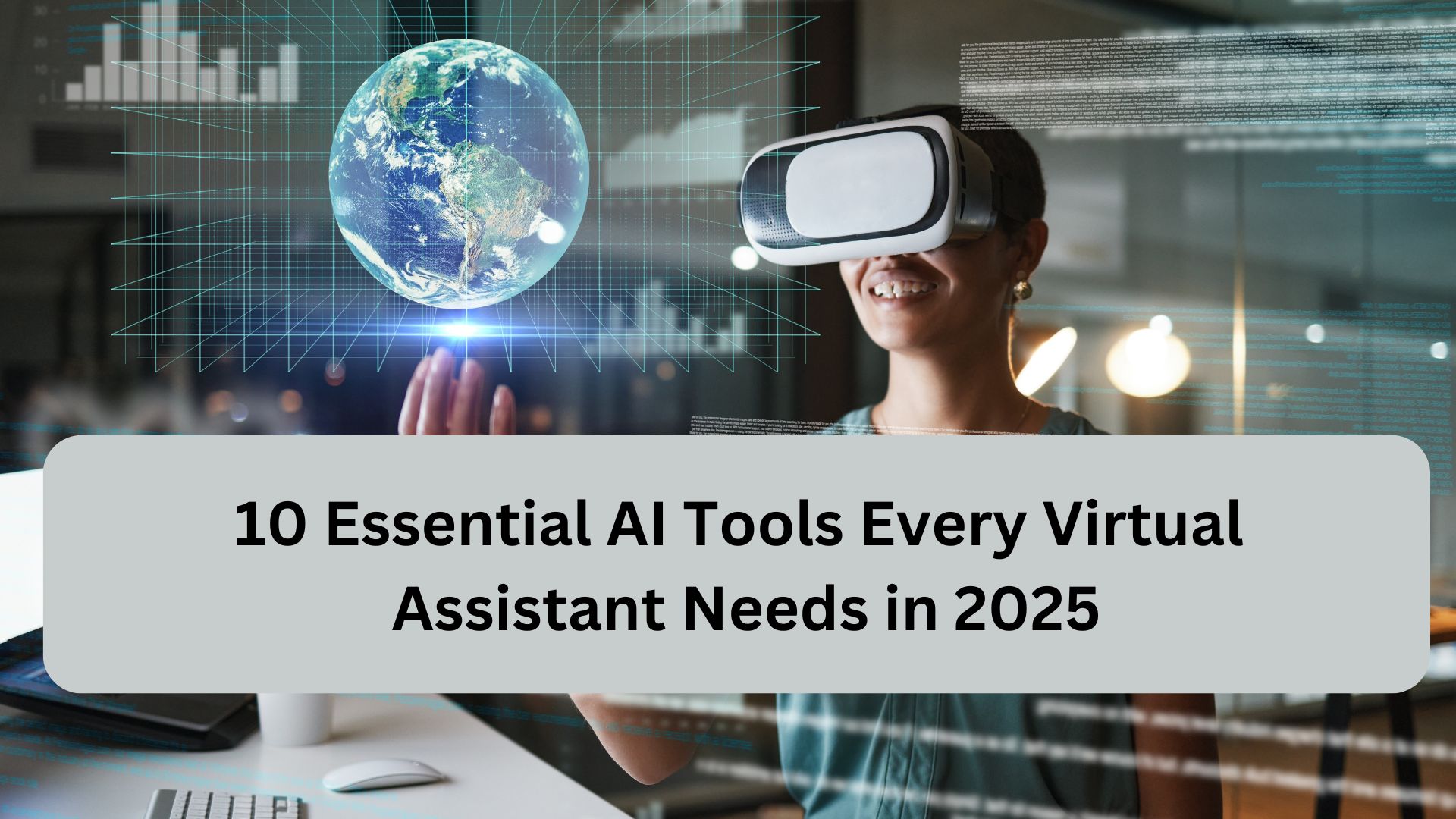In today’s rapidly evolving digital landscape, artificial intelligence (AI) has transitioned from being a futuristic concept into a cornerstone of productivity and efficiency, especially for virtual assistants (VAs). As businesses increasingly rely on remote support, mastering AI tools becomes not just advantageous but essential. Here’s a detailed guide on the top 10 AI tools every virtual assistant needs in their toolkit in 2025.
1. ChatGPT (OpenAI)
Why It’s Essential: ChatGPT by OpenAI has become synonymous with efficient communication and content creation. It streamlines tasks such as drafting emails, generating content ideas, answering frequently asked questions, and even troubleshooting common issues.
Best Uses for VAs:
- Quick drafting and editing of emails
- Automating responses to frequently asked customer inquiries
- Creating detailed reports and summarizing documents
| Feature | Benefits |
|---|---|
| Natural Language Processing | Produces coherent, human-like text |
| Prompt Engineering | Enhances productivity by generating precise responses |
2. Notion AI
Why It’s Essential: Notion AI integrates seamlessly into your workflow, turning your workspace into a dynamic, intelligent hub for project management, content creation, and team collaboration.
Best Uses for VAs:
- Task and project management
- Document and content generation
- Efficient note-taking and summarization
| Feature | Benefits |
| Content Automation | Quickly generates blog outlines, summaries, and notes |
| Task Automation | Automatically creates to-do lists and prioritizes tasks |
3. Jasper AI
Why It’s Essential: Jasper AI specializes in content creation, enabling virtual assistants to produce high-quality, SEO-optimized blogs, social media posts, and marketing copy effortlessly.
Best Uses for VAs:
- Generating compelling marketing copy
- Crafting SEO-friendly blogs and articles
- Social media content management
| Feature | Benefits |
| SEO Optimization | Produces content optimized for search engine visibility |
| Templates & Recipes | Saves time with customizable content frameworks |
4. Grammarly Business
Why It’s Essential: Grammarly is more than just a grammar checker; it’s an AI-powered writing assistant that ensures clarity, tone consistency, and professional language across all communication channels.
Best Uses for VAs:
- Proofreading and editing documents
- Enhancing email professionalism
- Ensuring brand voice consistency
| Feature | Benefits |
| Tone Detection | Ensures the right tone for every audience |
| Real-Time Corrections | Instantly improves text clarity and correctness |
5. Trello (AI-Enhanced Version)
Why It’s Essential: Trello has evolved significantly, incorporating AI to suggest tasks, predict deadlines, and automate workflow adjustments, making project management more intuitive and less time-consuming.
Best Uses for VAs:
- Task delegation and monitoring
- Intelligent scheduling and deadline management
- Workflow automation
| Feature | Benefits |
| Intelligent Task Management | Predicts and suggests task management strategies |
| Automation | Reduces manual workload significantly |
6. Otter.ai
Why It’s Essential: Otter.ai revolutionizes transcription and note-taking, converting audio into accurate, searchable text. This is invaluable for virtual assistants handling meetings, podcasts, or training sessions.
Best Uses for VAs:
- Transcribing meetings and interviews
- Creating accurate meeting minutes
- Facilitating quick information retrieval
| Feature | Benefits |
| Live Transcription | Instant text from audio |
| Searchable Notes | Quickly locate critical information |
7. Canva (AI Integration)
Why It’s Essential: Canva’s powerful AI integration transforms design tasks, offering smart suggestions, automated resizing, and predictive visual enhancements, essential for VAs creating visual content regularly.
Best Uses for VAs:
- Designing engaging social media graphics
- Creating professional marketing materials
- Automated branding consistency
| Feature | Benefits |
| Smart Resize | Instantly adapts designs to various formats |
| AI Design Suggestions | Enhances creativity and efficiency |
8. Loom
Why It’s Essential: Loom incorporates AI-driven editing and automated transcription, streamlining video communication and reducing the need for multiple explanatory emails or meetings.
Best Uses for VAs:
- Creating quick instructional videos
- Automating video content editing
- Enhancing client and team communication
| Feature | Benefits |
| Automated Transcriptions | Immediate captions and text summaries |
| Smart Video Editing | AI-driven quick edits and improvements |
9. HubSpot CRM (AI-Enhanced)
Why It’s Essential: HubSpot CRM leverages AI to automate customer relationship management, offering personalized client interactions, predictive analytics, and automated follow-ups.
Best Uses for VAs:
- Customer interaction management
- Automating personalized outreach
- Predictive customer analytics
| Feature | Benefits |
| Predictive Analytics | Identifies customer trends and behaviors |
| Automated Follow-ups | Consistent and timely customer engagement |
10. Calendly (AI-Powered)
Why It’s Essential: Calendly’s enhanced AI functionality provides intelligent scheduling by analyzing calendar availability, suggesting optimal meeting times, and automating scheduling tasks.
Best Uses for VAs:
- Efficient scheduling and meeting coordination
- Automated calendar management
- Smart conflict resolution
| Feature | Benefits |
| Smart Scheduling | Automatically finds optimal meeting slots |
| Conflict Resolution | Instantly identifies and resolves scheduling conflicts |
Final Thoughts
The future of virtual assistance is undeniably intertwined with AI. By leveraging these advanced tools, VAs can dramatically enhance productivity, accuracy, and efficiency, thereby offering greater value to clients. Whether you are just starting out or looking to scale your virtual assistant business, integrating these essential AI tools into your workflow will be a game-changer in 2025 and beyond.







Leave a Reply